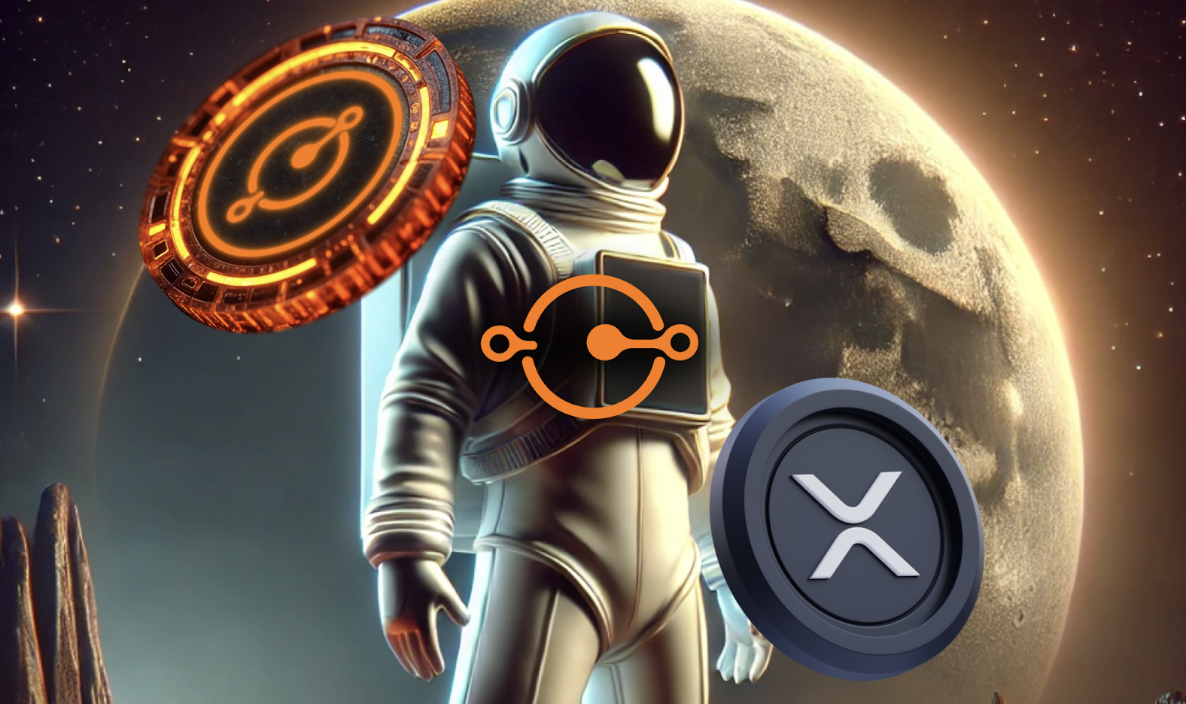XRP Price Prediction: Why Korean Investors Are Buying the Dip – Could This Mark a 10x Surge for XRP?
Korean exchanges have seen a surge in XRP buying activity, with many traders moving funds from ETH to XRP and BTC after XRP dipped below $2 – a topic we’ll explore in detail below.
PlutoChain ($PLUTO) could also draw attention in the meanwhile with its hybrid Layer-2 solution that could fix Bitcoin’s biggest frustrations — slow transactions, high fees, and limited real-world use.
Let’s look at the deets on both projects below.
XRP Price Prediction: Will Korean Investors Bring a Massive XRP Rally to 10x Gains?
XRP is currently priced at $2.41, which is a 3.7% decline over the past 24 hours. Despite the dip, trading volume remains high at $4.1 billion.
A key factor in this recovery was heavy buying from traders on Korean exchanges, especially Upbit and Bybit. Many investors shifted funds from Ethereum (ETH) to XRP and Bitcoin (BTC).
At the same time, whales were moving substantial amounts of XRP to exchanges like Binance. Over 180 million XRP changed hands in 15,000 transactions, which is the highest activity level since early January.
Despite the turbulence, some analysts are bullish on XRP’s long-term potential. For instance, Armando Pantoja, a prominent crypto analyst, says that XRP could reach between $8 and $25 during the 2025 crypto bull run.
PlutoChain ($PLUTO) Is a Hybrid Layer-2 Solution that Might Turn Bitcoin Into a Practical Payment Network
Bitcoin may be the most well-known cryptocurrency, but its slow transaction speeds, high fees, and lack of flexibility make it impractical for everyday payments. Businesses often struggle to accept BTC due to delays, expensive processing costs, and no refund mechanisms, which limits its real-world usability.
PlutoChain ($PLUTO) might be able to change that. With a hybrid Layer-2 scaling solution, it could improve Bitcoin’s speed, lower fees, and expand its functionality.
Instead of Bitcoin’s 10-minute block times, PlutoChain brings block times of just 2 seconds on its own network, which could enable instant payments and microtransactions.
One of its key benefits is cost reduction. High fees make Bitcoin impractical for small transactions, but PlutoChain lowers costs and could make BTC more accessible for businesses and consumers.
Beyond payments, PlutoChain expands Bitcoin’s capabilities. With Ethereum Virtual Machine (EVM) compatibility, it could allow BTC to be integrated into DeFi platforms, NFT marketplaces, and AI-driven blockchain applications.
To ensure a maximum level of security, PlutoChain has been audited by SolidProof, QuillAudits, and Assure DeFi. It also performs regular stress tests and code reviews to further strengthen its infrastructure against vulnerabilities.
Scalability is another major advantage. During testing, PlutoChain processed over 43,200 transactions in a single day, which means it can handle high demand without slowdowns.
Bitcoin’s governance is largely controlled by miners and developers, but PlutoChain introduces a community-driven model where users can propose and vote on upgrades.
Final Thoughts
As Korean exchanges create strong buying pressure on XRP and analysts predict potential 10x gains, another shift seems to be happening in the Bitcoin ecosystem.
PlutoChain ($PLUTO) could tackle Bitcoin’s biggest challenges with a Layer-2 solution that makes transactions faster, cheaper, and more functional.
With 2-second block times, lower fees, and smart contract support, it could help Bitcoin become a practical payment system for everyday use.
Disclaimer: This article is provided for informational purposes only. It is not offered or intended to be used as legal, tax, investment, financial, or other advice.
Credit: Source link


 Bitcoin
Bitcoin  Ethereum
Ethereum  XRP
XRP  Tether
Tether  Solana
Solana  USDC
USDC  Dogecoin
Dogecoin  Cardano
Cardano  Lido Staked Ether
Lido Staked Ether  TRON
TRON  Wrapped Bitcoin
Wrapped Bitcoin  Chainlink
Chainlink  Sui
Sui  Stellar
Stellar  Wrapped stETH
Wrapped stETH  Avalanche
Avalanche  Litecoin
Litecoin  Shiba Inu
Shiba Inu  Toncoin
Toncoin  LEO Token
LEO Token  Hyperliquid
Hyperliquid  Hedera
Hedera  USDS
USDS  WETH
WETH  Polkadot
Polkadot  Bitcoin Cash
Bitcoin Cash  Bitget Token
Bitget Token  Ethena USDe
Ethena USDe  Uniswap
Uniswap  Wrapped eETH
Wrapped eETH  MANTRA
MANTRA  Pepe
Pepe  Ondo
Ondo  Monero
Monero  NEAR Protocol
NEAR Protocol  WhiteBIT Coin
WhiteBIT Coin  Aave
Aave  Official Trump
Official Trump  Aptos
Aptos  Dai
Dai  Internet Computer
Internet Computer  Mantle
Mantle  Bittensor
Bittensor  sUSDS
sUSDS  Ethereum Classic
Ethereum Classic  OKB
OKB  Gate
Gate  POL (ex-MATIC)
POL (ex-MATIC)